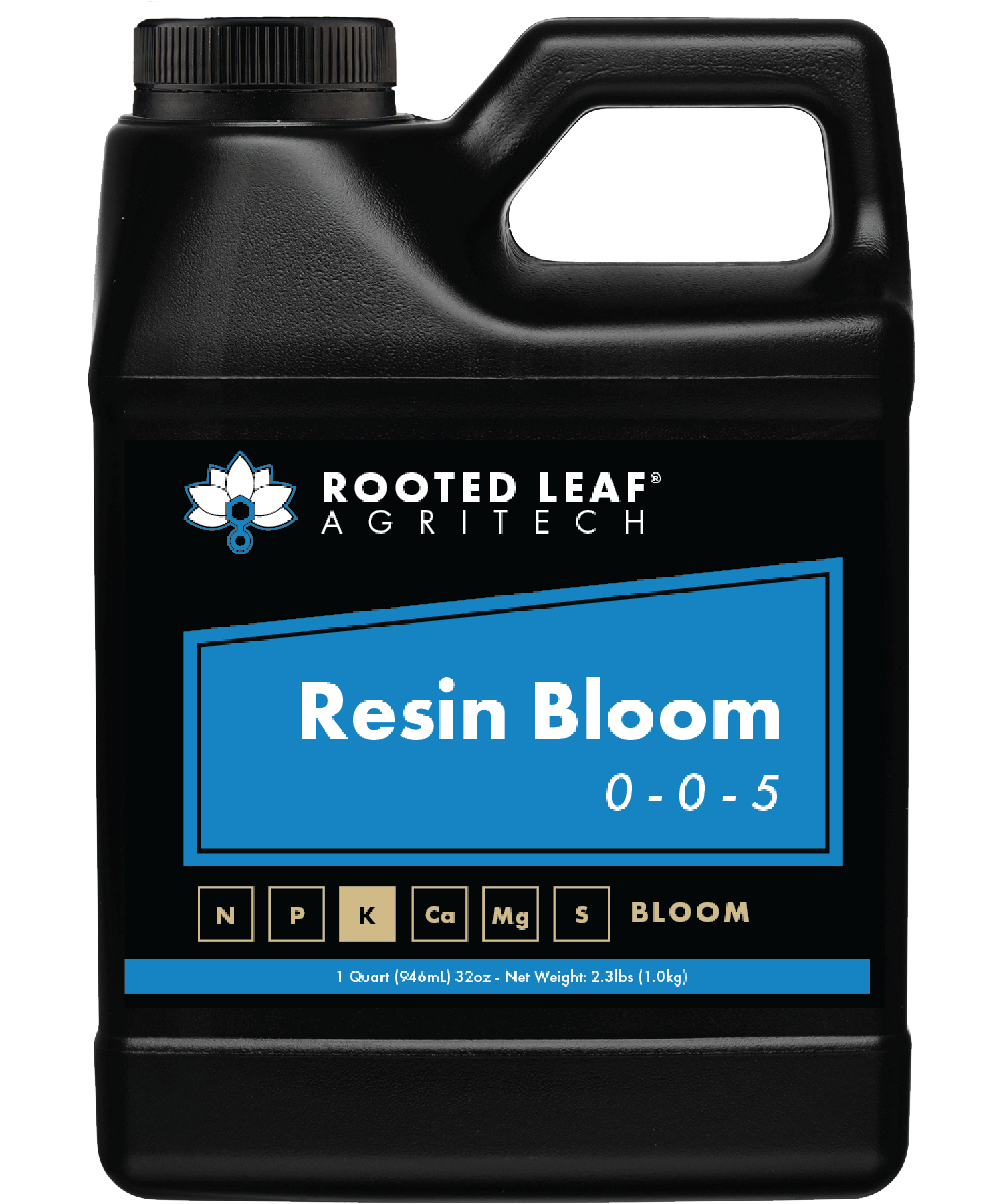Resin Bloom
Resin Bloom is an ultra-pure potassium complex, and is 100% free of nitrate, phosphate, sulfate, carbonate, and chloride salts.
Resin Bloom has always been a customer favorite, and it can safely be applied as both a soil drench and a foliar spray, in both vegetative and flowering phases.


Resin Bloom
0 - 0 - 5
The Problem
Potassium imbalances at the end of the flowering cycle can result in decreased water metabolism, reducing the overall quality and yield in the last weeks of the cycle.
The Solution
Resin Bloom is an electrolytic formula that can act as a powerful signaling compound during the late stages of bloom to help increase flower density and terpene concentrations.
Resin Bloom has a low salt index and can be used during the flush period to help dislodge residual salts from root hairs.
For drums and totes, please call or email us.
Carbon Is Life
We create carbon-based electrolytes that reduce harmful salt levels and help prevent nutrient accumulation in the soil. That’s part of why Resin Bloom can be safely used right up to harvest with no adverse impacts on plant health.

Resin Bloom is our potassium-based finisher.
It is 100% nitrate free and contains potassium in unique organic acid forms which act as powerful signaling molecules. These forms of potassium help drive secondary metabolism in plants, allowing water metabolism to remain at optimum levels in late-stage flowering plants.
Resin Bloom’s unique forms of potassium boost the uniformity of trichome development and acts on a molecular level by allowing plants to better express their natural terpene profiles.
Resin Bloom is derived from: Fermented plant material (Betula pendula, Jasminum officinale), potassium fulvate, potassium citrate, and potassium acetate.
Resin Bloom weighs 9.3 pounds per gallon.
1 mL of Resin Bloom delivers the equivalent of 116 ppm of CO2
-
 Potassium - 5%
Potassium - 5% -
 Carbon - 12%
Carbon - 12%

Birch
An iconic member of the birch family, silver birch (Betula pendula) is one of the oldest plants to be used by humans.
The bark and leaves are rich in rare compounds, and contain a mildly sweet sugar that has fascinating properties.
Jasmine
The magnificent fragrance of true jasmine (Jasminum officinale) led to the discovery and naming of a group of compounds that are fundamental for all plant life.
Native to Central Asia, the night-blooming flowers have long been used in everything from perfume making to traditional medicines and scenting tea leaves.

Feeding Instructions
Soil & Coco
-
Measure1 – 8mL per gallon of feedwater
-
Mixsolution well – no pH adjustment or aeration needed
-
Applyimmediately and discard any remaining solution
Foliar
-
Measure10 – 20mL per gallon of spray solution
-
Applyimmediately and discard any remaining solution
-
2 - 3xfoliar feeds per week until the beginning of week 3 in bloom

